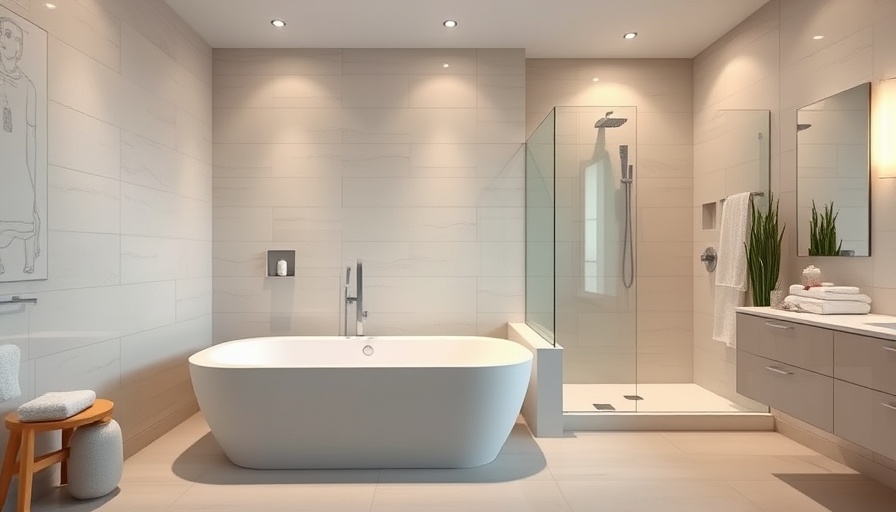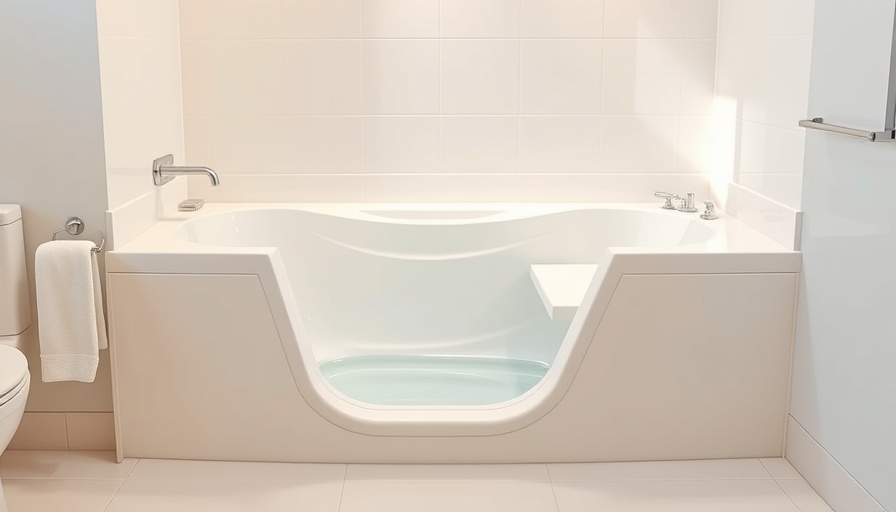
A Comprehensive Guide to Walk-In Tubs and Showers for Improved Accessibility
In today’s world, accessibility in the home has never been more essential, particularly for individuals with limited mobility or disabilities. As many seek to enhance their living spaces for practicality and safety, bathrooms emerge as a critical area for improvement. With this in mind, homeowners frequently find themselves deciding between walk-in tubs and traditional showers. This exploration aims to unveil the benefits and features of both options, empowering you to make an informed choice catered to your unique accessibility needs.
Understanding Walk-In Tubs: A Safe Haven for Users
Walk-in tubs are engineered for safety and ease of use, primarily benefiting individuals facing mobility challenges. Featuring a door that opens outward, these tubs provide a seamless entry that eliminates the often tricky maneuver of stepping over a bathtub’s side, a common barrier in traditional setups.
A standout feature of walk-in tubs is the low threshold, typically just a few inches from the ground. This design is complemented by built-in grab bars and slip-resistant surfaces, dramatically reducing the risk of falls—an all too common hazard in bathrooms. Some manufacturers offer additional therapeutic features such as whirlpool jets, heated surfaces, and customizable settings that transform an everyday bath into a soothing sanctuary, essential for pain relief or relaxation.
Accessibility and Safety Features of Modern Showers
On the other hand, showers with accessibility in focus have greatly advanced, emphasizing user safety and straightforward design. Roll-in or barrier-free models allow users to walk straight onto the shower floor with minimal step-up, reducing slip risks for seniors and those with mobility impairments.
Accessibility features in modern showers go beyond simple designs. Many come equipped with grab bars, built-in benches, and adjustable showerheads, offering flexibility for users with varying needs. Handheld showerheads enable water control while seated, ensuring convenience and ease of use. Furthermore, the selection of anti-slip tiles adds a critical safety feature, making accessible showers a increasingly popular option.
Walk-In Tubs vs. Showers: A Comparative Analysis
When comparing walk-in tubs and showers, the differences become especially pertinent to guiding your decision. Walk-in tubs tend to require more space and can involve a more complex installation process—factors to consider if you are constrained by a small bathroom layout. Yet, their therapeutic features are appealing, making them ideal for those undergoing physical therapy or simply looking for a relaxing bathing experience.
Conversely, accessible showers generally provide a more flexible design, often requiring less maintenance. Depending on chosen features, they can also be more financially viable, catering to various budgetary constraints. Moreover, showers often facilitate a quicker bathing experience, appealing to individuals who prioritize efficiency in their daily routines.
Health Benefits and Risk Factors in Choosing Your Bathing Setup
Both walk-in tubs and accessible showers come with inherent health benefits and considerations. For individuals dealing with conditions such as arthritis, the ease of entry in walk-in tubs may provide relief during bathing. Its therapeutic features can soothe aching muscles and joints. In contrast, the straightforward design of showers can promote quicker hygiene practices and allow users to maintain autonomy in their bathing process.
However, potential risk factors can influence your decision. Walk-in tubs require full immersion, which can pose hazards if users feel lightheaded or weak. It’s essential to ensure that users can independently exit the tub safely. On the other hand, while accessible showers reduce the risk of falls, improper installation or selection of fixtures can lead to slippery surfaces, emphasizing the importance of choosing quality materials and designs.
Future Trends in Bathroom Accessibility
Looking forward, the trends in bathroom accessibility are expected to evolve in a way that would increasingly integrate technology and user-centered designs. Smart showers equipped with health monitoring systems could revolutionize personalized care, providing real-time data to caregivers and families. Meanwhile, walk-in tubs might evolve to offer greater customization, accommodating individual preferences and needs more effectively.
The market is witnessing a rise in products specifically designed for aging populations, anticipating demand from the 55+ demographic who seek homes that support their aging journey through independence and safety.
Conclusion: Empowering Decisions for Enhanced Living Spaces
Ultimately, your decision between a walk-in tub and an accessible shower will need to reflect your specific lifestyle, preferences, and needs. Taking the time to explore each option’s advantages ensures you select the best solution for your bath experience. Whether you prioritize the therapeutic benefits of a walk-in tub or the flexibility of a modern accessible shower, the right choice can dramatically enhance your quality of life.
Discover the various options available by consulting local services specializing in bathroom modifications. Their expertise could provide invaluable guidance in selecting a setup that suits your unique needs now and in the future.
 Add Row
Add Row  Add
Add 




 Add Row
Add Row  Add
Add 

Write A Comment